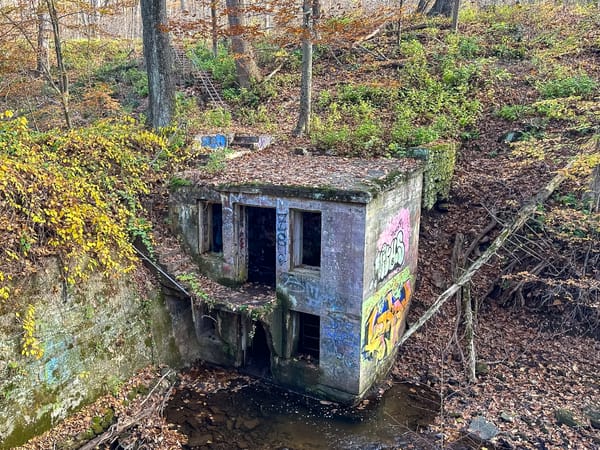Battery Reilly (Newport, RI)
Along Lincoln Drive in Fort Adams State Park, the abandoned Battery Reilly is one of Newport’s least-known military relics.

Hidden behind thick vegetation along Lincoln Drive in Fort Adams State Park, the abandoned Battery Reilly is one of Newport’s least-known military relics. Built at the height of the Endicott Period in 1899, this reinforced-concrete coastal battery once formed part of the Harbor Defenses of Newport, guarding the western entrance to Narragansett Bay and the approaches to Newport Harbor.
Though now overgrown and fenced off, Battery Reilly remains an evocative reminder of the era when America’s coastlines bristled with modern artillery — silent proof of the ingenuity and ambition that defined turn-of-the-century coastal defense.
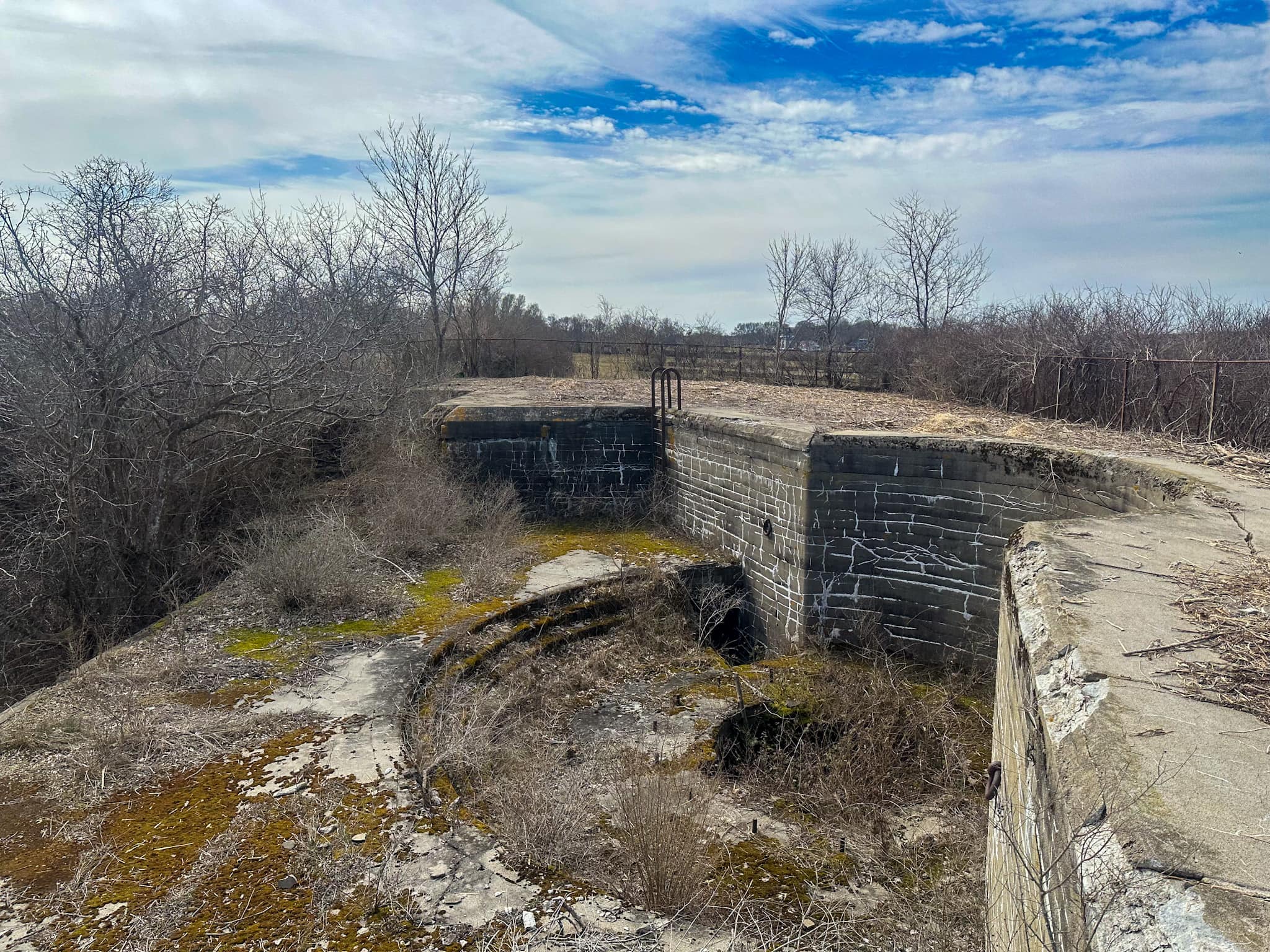
The Creation of Battery Reilly
In the late 1800s, rapid improvements in naval gunnery and ship armor had rendered the nation’s masonry forts obsolete. To modernize America’s defenses, the Endicott Board of 1885 recommended constructing a new generation of reinforced-concrete gun batteries along the coasts. Fort Adams, already a storied stronghold since the early 19th century, was chosen to host several of these new batteries — including Battery Reilly.
Construction began in April 1898 and was completed in September 1899. The U.S. Army Coast Artillery Corps officially placed the installation into service on June 15, 1899.
The battery was named in honor of Captain Henry J. Reilly of the 5th U.S. Artillery, who had served at Fort Adams from 1870 to 1875 and was later killed in action at Pekin, China, on August 15, 1900, during the Boxer Rebellion.
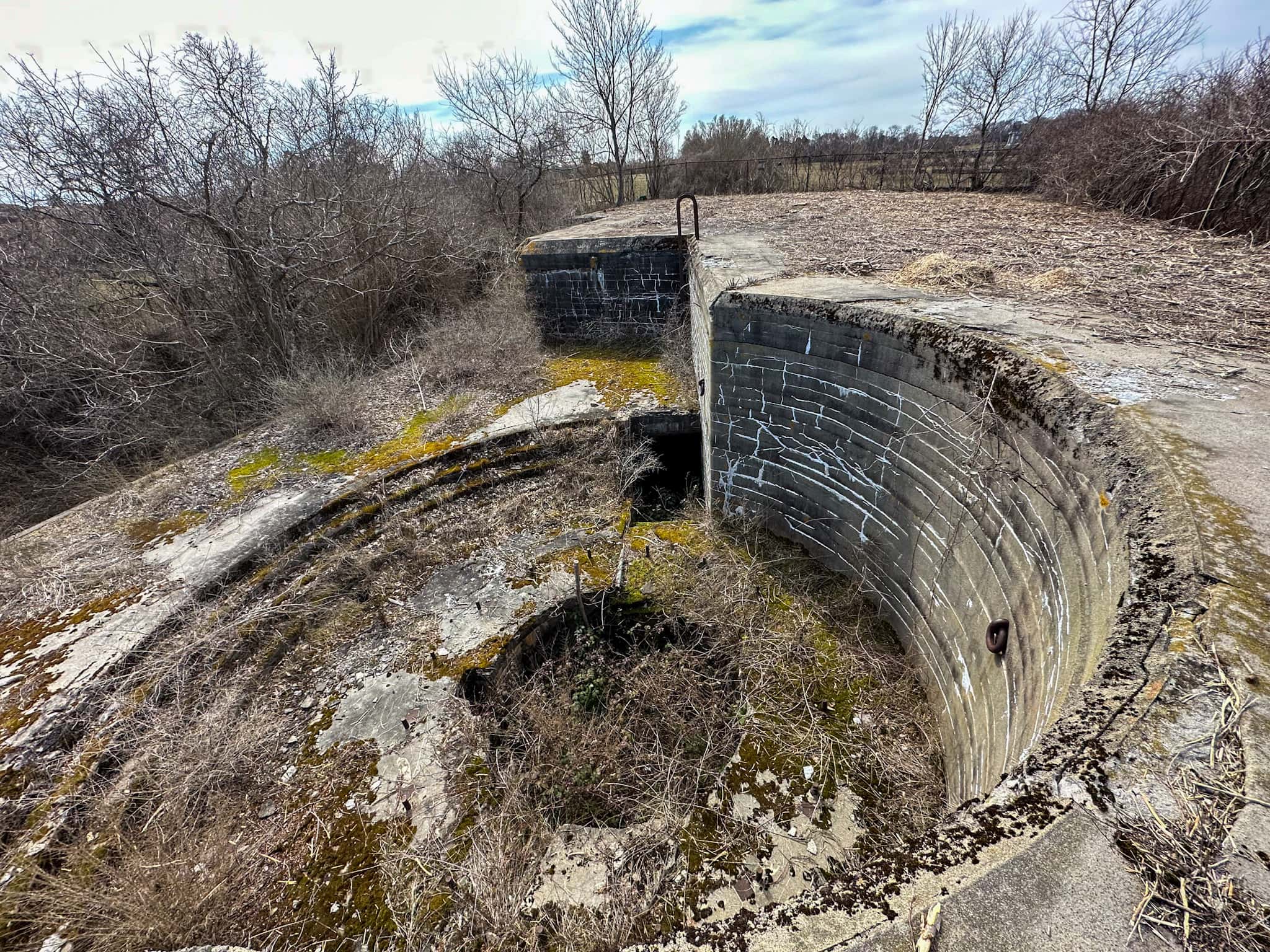
Design and Armament
Battery Reilly was a standard dual-gun Endicott-era battery, featuring two stories and a simple yet formidable layout:
- Upper Level: Two 10-inch M1888MII guns mounted on M1896 disappearing carriages
- Lower Level: Ammunition magazines for storing shells and powder
Each gun was capable of firing a 320-pound projectile more than six miles, protecting the approaches to Newport’s deepwater harbor. The guns were supported by two Taylor-Raymond front-delivery shell hoists, which lifted the heavy ammunition from the magazines to the gun platforms above.
The battery’s concrete design was typical of its era — practical, durable, and intended to blend into the landscape while providing maximum protection from naval bombardment.
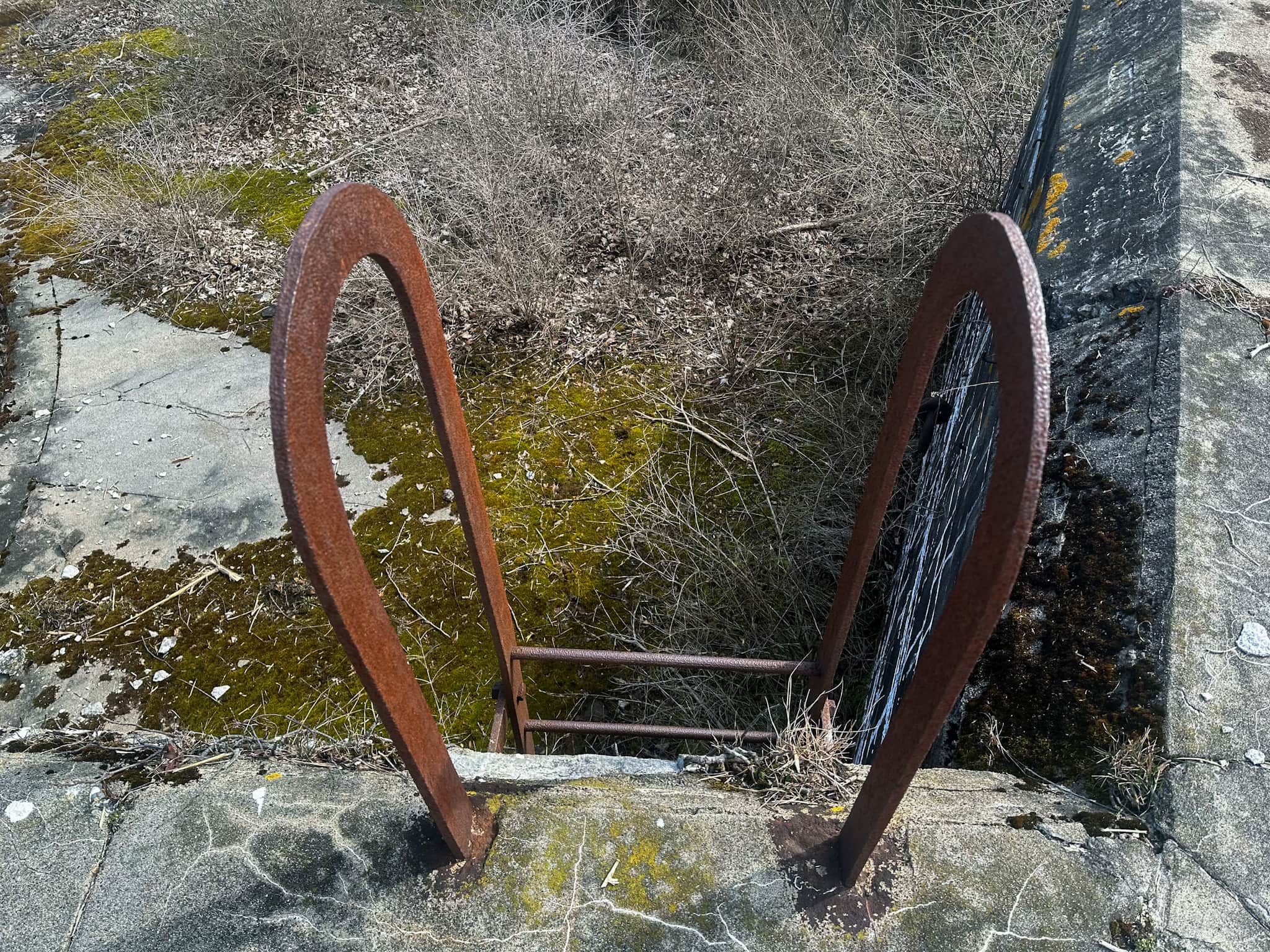
World War I and the End of Battery Reilly
When the United States entered World War I, the Army began dismantling many coastal defenses to repurpose artillery for overseas use. On August 24, 1917, Battery Reilly’s two guns were ordered dismounted and prepared for shipment to Europe.
However, shipping delays and changing plans led to a redirection: in 1918, both 10-inch guns were instead transferred to Fort Warren, located on Georges Island at the entrance to Boston Harbor, Massachusetts.
Following the war, the Coast Artillery decided that Battery Reilly would not be rearmed. One gun mount was scrapped on May 26, 1920, while the second remained in storage until it, too, was scrapped on September 22, 1931. With no remaining weaponry, Battery Reilly was officially decommissioned and abandoned by 1920.

Battery Reilly Today
More than a century later, Battery Reilly still exists — though time and nature have nearly hidden it. Located just a few steps off Lincoln Drive on the western edge of Fort Adams State Park, the structure is now fenced off and largely covered in brush and ivy.
Visitors can still catch glimpses of the concrete gun platforms and parapets through the trees, especially in winter when foliage is thin. The lower level is reported to be partially flooded, and the structure is not safe for interior exploration. Those who visit should respect all posted “No Trespassing” signs and admire the battery from a distance.
Despite its deterioration, Battery Reilly remains an important piece of Newport’s layered military story — one that spans from the 1820s brick fort to 20th-century coastal modernization.
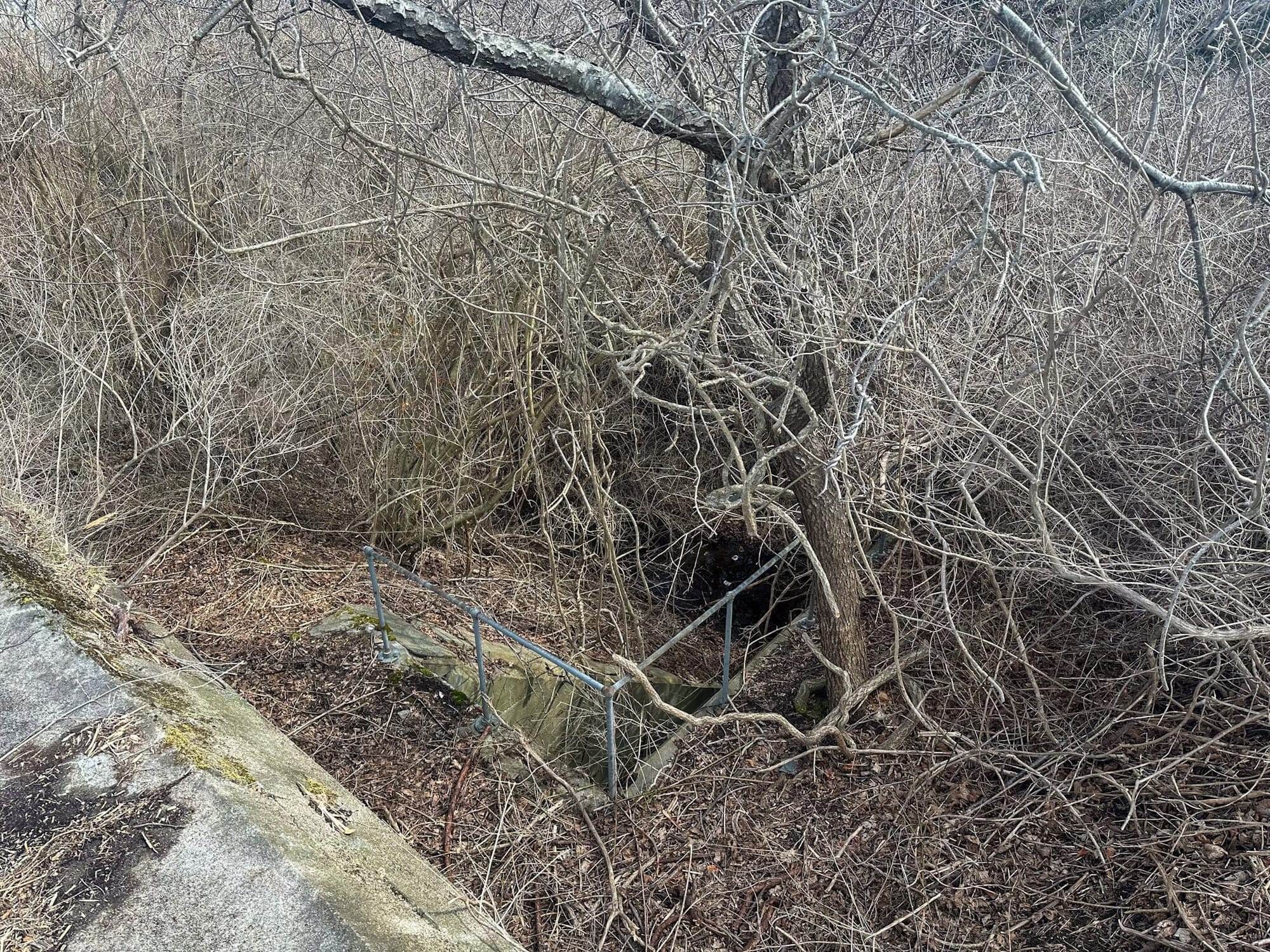
Visiting Information
- 📍 Address: Lincoln Drive, Fort Adams State Park, Newport, Rhode Island
- 🌐 GPS Coordinates: 41.474278, –71.342667
- 🅿️ Parking: Free roadside parking available along Lincoln Drive
- ⚠️ Access: Battery is fenced and overgrown; no interior entry permitted
- 🕰 Best Time to Visit: Late fall or early spring when vegetation is sparse
Battery Reilly is listed on the National Register of Historic Places as part of Fort Adams State Park (Reference #70000014).

Why Battery Reilly Matters
Though easily overlooked, Battery Reilly reflects a pivotal moment in American military engineering. Its disappearing guns, reinforced construction, and integration into the broader Endicott-Era defense network symbolize a period of rapid modernization and global awareness.
While today it stands silent and submerged in greenery, Battery Reilly’s remains still speak of an age when Rhode Island’s coastline was seen as a frontline — a place where innovation, vigilance, and national security met the unyielding Atlantic.
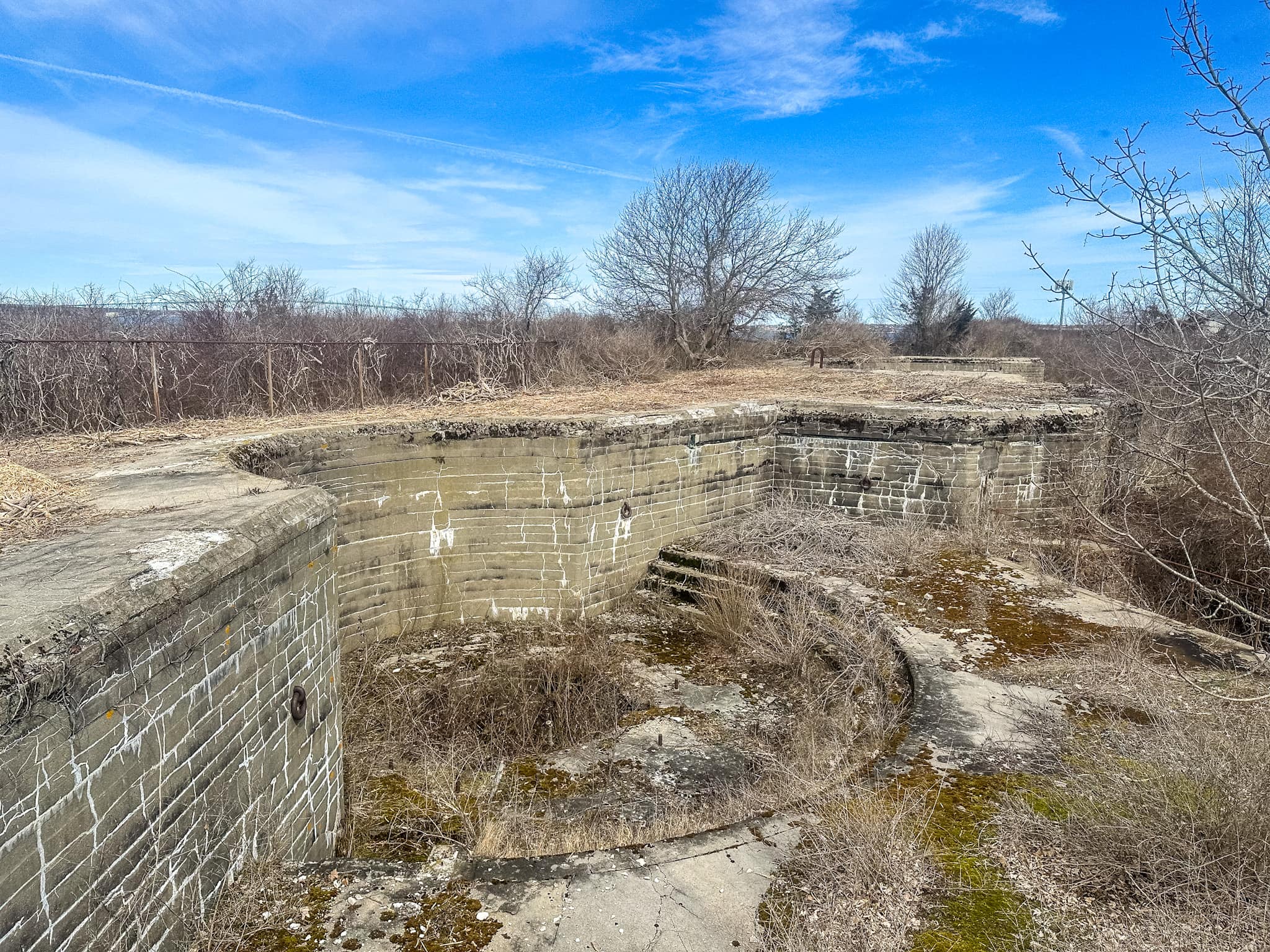
Quick Facts
- 🏗 Construction: April 1898 – September 1899
- ⚙️ Armament: Two 10-inch M1888MII guns on M1896 disappearing carriages
- 💣 Shell Hoists: Two Taylor-Raymond front-delivery hoists
- 💰 Commissioned: June 15, 1899
- 🪖 Named For: Captain Henry J. Reilly (killed in action, Pekin, China, 1900)
- 🕰 Deactivated: 1920
- 🏞 Now Part Of: Fort Adams State Park, Newport, RI
- 🏛 National Register Reference: #70000014
Final Thoughts
For those exploring Fort Adams State Park, Battery Reilly is a quiet but fascinating stop — a weathered reminder of the Endicott Era’s engineering achievements and the evolution of America’s coastal defenses. Even in its overgrown state, it stands as a bridge between centuries, connecting Newport’s Revolutionary past with its industrial-age fortifications.
Though time and tide have taken their toll, Battery Reilly remains an integral part of Rhode Island’s military landscape — a story carved in concrete, hidden just beyond the trees.



